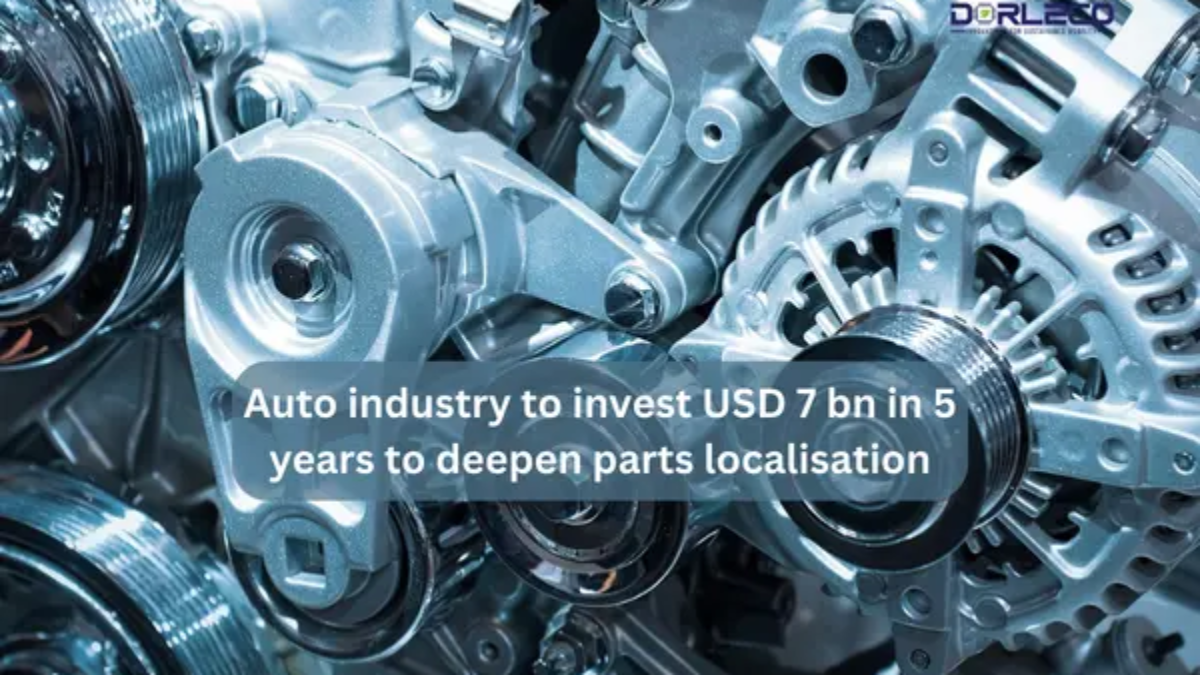By FY28, the Indian auto industry plans to invest up to USD 7 billion in the localization of innovative components, such as electric motors and automatic transmissions, to cut imports and take advantage of the ‘China Plus One’ sourcing model used by multinational corporations. According to the Automotive Component Manufacturers Association (ACMA), suppliers and automakers are expected to invest this money between FY24 and FY28.
The Indian auto industry plans to invest up to USD 7 billion, or roughly INR 58,000 crore, by FY28 to further localize advanced components, such as automated transmissions and electric motors, to cut imports and take advantage of the “China Plus One” sourcing model used by international corporations.
Industry association Automotive Component Manufacturers Association (ACMA) stated that between FY24 and FY28, automakers and their suppliers are anticipated to make this investment.
According to the most recent assessment on localization programs jointly conducted by ACMA and the Society of Indian Automobile Manufacturers (SIAM), these companies have already undertaken more than 500 localization projects across 11 key component categories, including drive transmissions and steering, engines, electricals, and body chassis, at an investment of over INR 3,000 crore. This has reduced net imports by 5.8% (double the target of about 3%), or by INR 7,018 crore, in the two years leading up to FY22.
They stated that during the next five years, concluding in FY27, work is underway to raise net localization by an additional 16–20%, or roughly INR 24,995 crore. There are ongoing projects to decrease airbag imports from 26% in 2023 and 100% in 2012 to 20% by 2028, electronic stability control imports from 63% in 2023 and 100% in 2015 to 47% by 2025, and ventilator fan system imports from 85% in 2024 and 100% in 2021 to 10% by 2026.
In the medium term, there are also plans to further localize combination charging systems, high-strength steel, power control units, and automatic gearboxes.
Over 75% of all vehicle parts imported into the nation are made up of these parts.
The Indian auto industry wants to turn India become an export powerhouse for cutting-edge car components in addition to lowering imports.
According to ACMA President Shradha Suri Marwah, “The industry is building resilient supply chains globally by reducing overdependence on any particular country or geography.”
We are optimistic that we will become a substantial net foreign exchange earner for the country in addition to seeing a decline in imports. “The industry is expected to invest another USD 6.5-7 billion in next five years in design and development and new age technologies including electronics and EV components.”
According to Suri, the rate of import decline over the past two years has nearly doubled from the industry’s intended pace of 6%.
Undoubtedly, China is the primary supplier of auto parts to India. But compared to FY20, its market share of automobile imports fell to 30% in FY22 from 32%. In FY22, 1.36 lakh crore Indian rupees worth of components were imported by Indian automakers and suppliers.
Industry participants stated that localization initiatives will help increase India’s future share of international trade in cutting-edge auto components in addition to lowering reliance on China.
Auto parts exports from the nation rose by about one-third to INR 1.42 lakh crore in the two years leading up to FY22, with providers exporting parts even to developed markets in Europe, Asia, and North America.
A top industry official who wished to remain anonymous stated, “With the advent of electric, connected, and autonomous technologies, there is a massive transition taking place in the automotive industry globally.” “As we transition to new mobility, this is a great opportunity to add more value to India and increase our competitiveness going forward.”
According to SIAM President Vinod Aggarwal, the Indian auto industry localization initiatives have begun to bear fruit, as has the government’s INR 25,000-crore production-linked incentive (PLI) plan aimed at addressing cost constraints.
According to Aggarwal, “the share of imports in total revenues of the automotive industry has declined by about 4% between FY20 and FY22, despite the sharp rise in customer demand for feature-rich vehicles across segments.” “Industry turnover increased by 27.9% over these two years, while import growth was only 8.7%, suggesting that localization efforts are beginning to pay off.”

